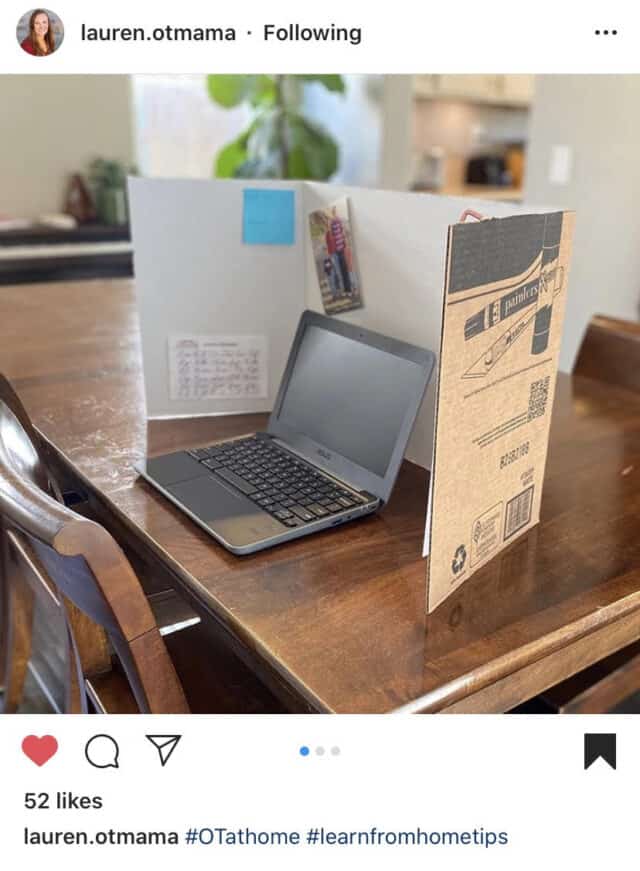Online School: Helping Children Stay Focused
Most parents come to us complaining that keeping children focused during online school has become a challenge. However, with some tips, tools, and strategies, you can help your children stay focused during online school while improving their attention and concentration!
Identifying Challenges
Identifying what is hard for your child is the first step towards online school thriving. The following questions will give you an idea of what areas can be troubling your child’s learning:
- Does he/she have difficulty getting started? Logging on?
- Does he/she have a hard time watching lessons that are longer than 15 minutes?
- Does he/she get frustrated following multiple step directions?
- Does he/she has constantly gotten up and walked away from their device, taking forever to finish their work?
- Does he/she forget to do assignments?
- Is he/she easily distracted?
- Does he/she play with one activity for longer than 15 minutes?
Taking the time to identify which challenge is triggering your child’s distraction is key to implementing the necessary measures to help him/her focus.
Helping Your Child Stay Focused During Online School
Your child may not need all of the strategies you’ll learn here, some may be more helpful than others depending on your child’s needs. Take some time to identify and make a quick plan after you read through the list below.
Establish Flexible Routines
It is well known that autistic children thrive in routines, however, the beauty of online school is the fact that the schedule can be fixed around you and your child’s needs.
The following examples will help you create a flexible-yet established routine for your child.
Routine Example 1:
- Wake up between 8 and 8:30 every day. Mom wakes up the child if he/she doesn’t wake up on their own. Gets dressed and brushes teeth before coming to the kitchen. (A consistent wake-up and bedtime are important).
- 8:45: Breakfast
- 9:15: starts first class at the designated desk area, but has the option to sit on a yoga ball
- 10:00: 5-minutes of a yoga video or a brain break
- 11:00: 5-minute break, runs around outside or jumps up and down the stairs
- 11:30: Eats lunch
- 12:15: Back to school work, but has the option to use an alternate location. Has fidgets and weighted lap pad available
- 1:00: Lays on the floor to do work and takes frequent sips from a water bottle
- 2:00: Eats a crunchy snack and does 20 jumping jacks
- 3:00: School is over, given time to decompress in a quiet sensory room, sensory tent, or an activity of their choice.
Routine Example 2:
- Wake up at 7-7:30: Allowed to stay in pajamas if they prefer so.
- 8:00: Crunchy breakfast with protein and fruits/veggies
- 8:30: Bounces on trampoline/rides bike/runs for 15 minutes before starting school
- 8:45: School starts, the child chooses where they’d like to sit (make sure no other noises or screens are audible). Provide headphones
- 9:30: Movement break (learn more about movement breaks below)
- 10:30: Crunchy snack, Popsicle, or smoothie
- 11:15: Movement break
- 12:00: Lunch
- 12:45: Movement break
- 1:30: Chews gum and stands while completing school work
- 2:15: Movement break
- 3:00: School is over, give 2-3 options of activities such as quiet time, screen time, or playing outside
These are just ideas to provide you with a starting point of a structured, yet flexible routine. These routines are just examples to give you an idea of where to start! Think back to your child’s needs and make a rough plan, being ready to adapt as needed.
Eliminate Distractions
If there are papers, toys, and other piles of life laying around, make an effort to straighten up before school starts the evening beforehand. The visual distraction can make it difficult for them to pay attention to.
We love this idea from lauren.otmama:

Also, try this free printable hang tag to prevent knocking on your door:

Move
Incorporating physical activity is necessary for easing anxiety. We understand that with quarantine it can be difficult to have access to gyms or parks. However, your backyard or your porch can be a good alternative.
The following ideas can be helpful to move and get active:
- Easter egg hunt.
- Playing with bubbles.
- Setting an obstacle race.
- Painting.
Be Patient
Some days you will feel like you have accomplished a lot and on others, you might feel like you didn’t, and that is okay. Remember that this situation won´t be forever and it’s not a competition of overachieving either. The whole point of homeschooling is to keep things as “normal” as possible. So give yourself a high five and know that you got this and you are doing incredible!
You got this mommy!
We understand that having yourself and your children in quarantine can be challenging. However, we want to remind you that you are not alone and that we are here to answer all your questions related to autism, covid-19, prevention, stem cells, and more. Feel free to contact us in the comment section.
At WSCC, we offer support for autistic families and their children with Stem Cell Therapy treatments that can transform autistic conditions by healing the gut, decreasing inflammation, and improving brain function. We also created an autistic community on Facebook that is destined to offer support and companionship for ASD parents and their families on their journey.
Remember, you are not alone!
Sources:
Instagram:https://www.instagram.com/p/CD97cATBs5J/?igshid=k1gluooo24m4
